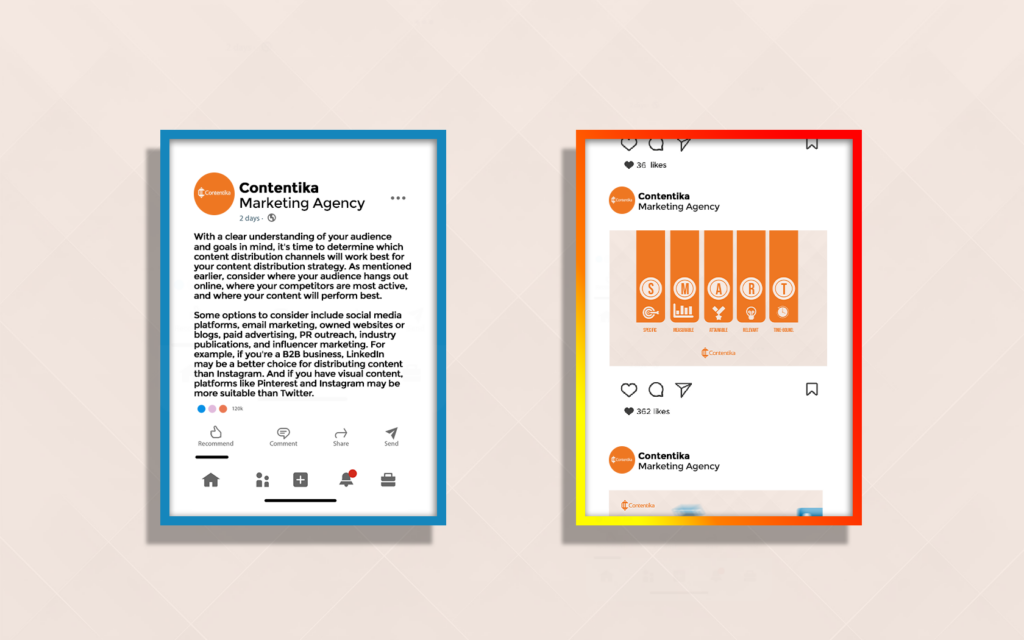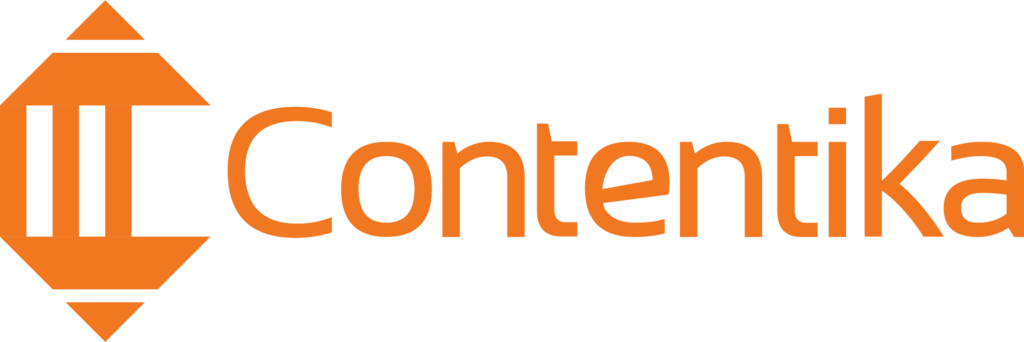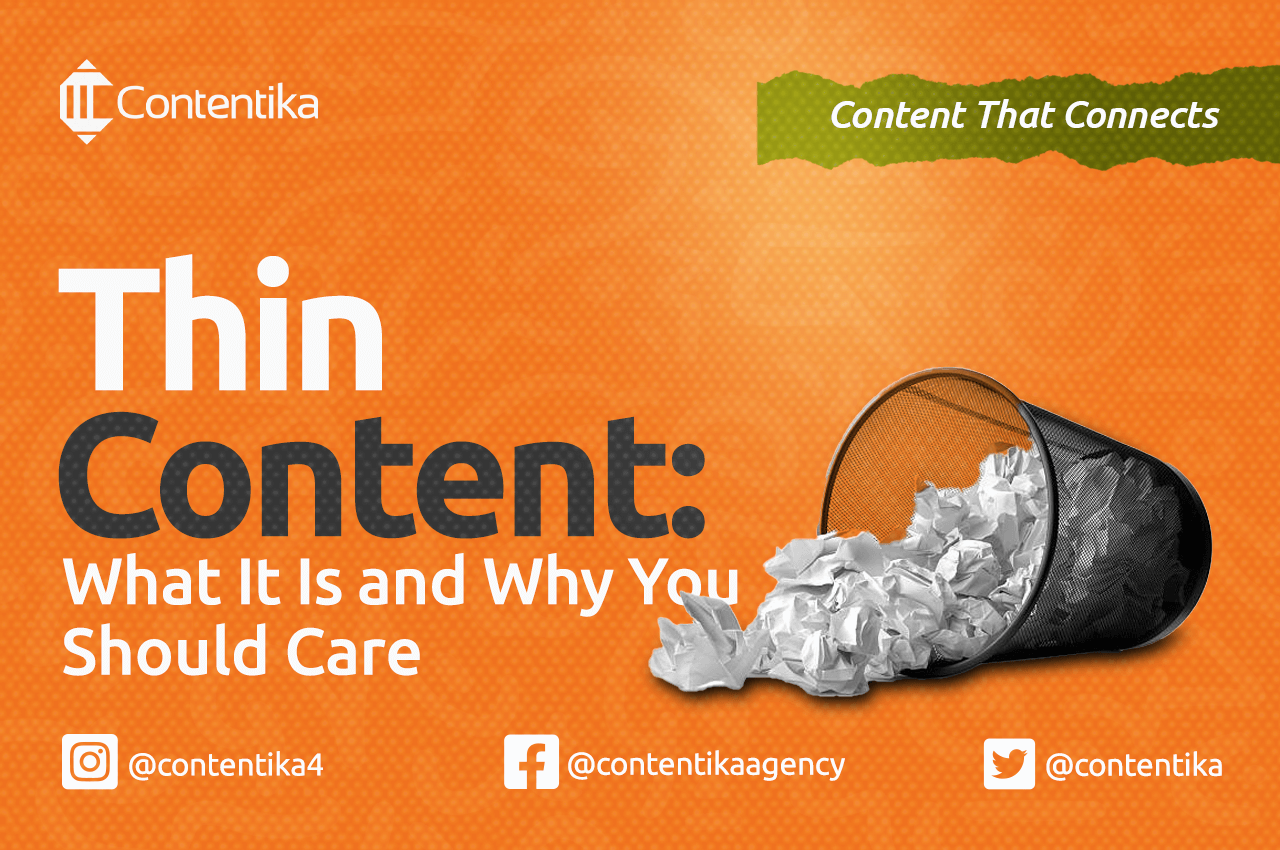As a marketer, you understand that in order to maximize your reach and boost customer engagement, you need a content distribution matrix.
But most times, your sweats don’t just measure up to the results you ultimately see. It feels like the content is just floating around in space with no real direction or purpose.
“What’s the missing puzzle?”, you might wonder. Well, if you find yourself in this position, we know one thing for sure – you need an efficient content distribution matrix that specifically works for your business.
In this one-stop guide, you will learn how to identify the most effective channels for your specific audience, create a clear distribution plan, and track results to ensure maximum ROI.
Before diving into the various channels, let’s first understand the concept of the distribution matrix.
What is a Content Distribution Matrix?
Content distribution matrix has to do with the visual representation of where and how your content will be shared. It allows you to outline the different channels and platforms that you’ll use to distribute your content, along with the frequency and timing of these distributions.

The concept behind the content distribution matrix is to recognize that certain content types and channels work better for certain audiences. By understanding the specific needs and preferences, you can develop a distribution plan that maximizes reach and engagement.
Let’s illustrate.
Say you’re a B2B marketer targeting C-level executives. Your content distribution plan will likely involve LinkedIn and industry-related events instead of a B2C marketer targeting Gen Z on Instagram.

So, content distribution matrix helps you prioritize where to focus your efforts and track the success of each platform or content distribution channel. And as a marketer, this can help you plan out their content strategy and allocate resources accordingly.
Overall, the idea is to map out the specific content distribution channel that best aligns with your audience and content type rather than randomly posting on every single platform without a clear strategy.
Content Distribution Strategy – Step-by-step Process
As it is well known, planning is the key to success. The same goes for your content distribution strategy.
When you always wish to achieve the most in the content distribution matrix, we recommend you follow these steps.
1. Identify Your Audience
Before creating a content distribution matrix, it’s crucial to have a clear understanding of your target audiences. This will help you determine the most effective channels for reaching them.
Ask yourself who they are, what their interests are, their demographics, and their pain points.
Then, research where they typically hang out online – which social media platforms do they use the most? What kind of websites or publications do they read?
Consider conducting audience research through surveys, interviews, and online analytics tools to gather more insight. By understanding your audience, you’ll be able to zero in on the channels that will best reach them.
2. Set Goals/Objectives and Measure Results
It’s important to define what you want to achieve with your distribution strategy. Do you intend to increase organic traffic to your website? Generate leads? Improve brand recognition?
By having specific goals in mind, it will better guide your decision-making and give you a precise measure of success. In all, your goal must be SMART – specific, measurable, attainable, relevant, and time-bound.

Also, set specific goals for each channel and track your results to see what’s working and what may need improvement. This will help you continually optimize your content distribution plan.
Use analytics tools such as Google Analytics or Hootsuite to track and measure metrics such as website traffic, social media engagement, and conversions.
3. Match Content Types with Channels
With a clear understanding of your audience and goals in mind, it’s time to determine which content distribution channels will work best for your content distribution strategy. As mentioned earlier, consider where your audience hangs out online, where your competitors are most active, and where your content will perform best.
Some options to consider include social media platforms, email marketing, owned websites or blogs, paid advertising, PR outreach, industry publications, and influencer marketing. For example, if you’re a B2B business, LinkedIn may be a better choice for distributing content than Instagram. And if you have visual content, platforms like Pinterest and Instagram may be more suitable than Twitter.

You can also consider creating different versions of the same piece of content to cater to various preferences. For example, you could repurpose a blog post into an infographic for visual learners or create a podcast episode for auditory learners.
Note that the content distribution channels you eventually choose must align with your overall objectives and target audiences.
4. Plan and Determine the Frequency
Next, consider when and how often you’ll distribute your content on each channel.
To start, create a content calendar and schedule when you’ll publish new content and when you’ll repurpose or promote older content. This will help keep your distribution plan organized and ensure a consistent flow of content.
When determining frequency, consider the platform’s algorithm and what works best for your audience. For example, LinkedIn’s algorithm favors frequent posting, while Instagram tends to favor quality over quantity.
Also, consider the peak times when your audience is most active on each channel and schedule your content accordingly. This can greatly impact engagement and reach.
5. Promote and Amplify Your Content
Once you’ve outlined your distribution plan, it’s time to get the word out about your content.
Consider paid advertising options, such as promoting social media posts or Google ads, to increase visibility and reach a wider audience. Also, consider reaching out to influencers in your industry (“influencer marketing”) who may be willing to share your content with their followers.
Additionally, don’t underestimate the power of employee advocacy. Encourage your employees to share company content on their personal social media profiles or reach out to their professional networks via email. This can significantly expand your reach and increase trust in your brand.
And finally, make sure you have sharing buttons readily available on all content for easy sharing by readers or viewers.
6. Adjust and Iterate
Feel free to make changes to your content distribution plan based on your results. Rome wasn’t built in a day, and neither is a successful distribution strategy.
Regularly check your analytics to see which channels and types of content are performing well and adjust accordingly. And don’t be afraid to try out new channels or experiment with different tactics.
By constantly iterating and adjusting your plan, you can effectively reach your target audience and achieve your content marketing goals.
Why You Need a Content Distribution Matrix
Creating valuable content is only half of the process. The other half involves getting that content in front of the right audience, and a distribution matrix can help with that.
So, to drive home this point, it is crucial to understand the benefits of a content distribution matrix for your business and marketing efforts:
Prioritize Where to Focus Your Efforts and Allocate Resources
Usually, there’s limited time and budget for content promotion.
So, instead of spreading yourself thin by randomly sharing content on every available platform, the matrix allows you to zero in on those that will drive the most impact for your specific audience.
Once you’ve identified the channels that align best with your target audience, you can focus your efforts and allocate resources accordingly.
Improve Overall Content Strategy
Creating a distribution matrix forces you to take a step back and analyze your content and audience.
This helps improve your overall content strategy by ensuring that your content is valuable and relevant to your audience and that you’re targeting them through the proper channels.
Maximize Reach and Engagement
You can maximize reach and engagement by focusing on the channels that align with your audience’s preferences. This ultimately leads to better ROI for your content efforts.
In addition, a distribution matrix also allows you to plan out the timing and frequency of these distributions, ensuring that your content is being shared at optimal times for maximum reach and engagement.
Track the Success of Each Platform or Channel
A distribution matrix also serves as a visual representation of your content strategy, making it easier to track the success of each channel and make adjustments as necessary. This helps you fine-tune your strategy to drive even better results.
For instance, through specific goals and KPIs set for each channel, you can assess whether it’s worth continuing to invest in one platform or if it’s time to pivot and focus on another.
Gives You a Competitive Edge
Having a clear distribution plan in place, you can ensure that your content is effectively promoted to the right audience.
This ultimately gives you a competitive edge, as you can drive better results and stand out among the noise of other marketers vying for attention on various content distribution platforms.
Remember that in the ever-crowed digital space of content marketing, having a solid distribution plan is crucial for success.
Increased Website Traffic, Conversions, and Sales
Interestingly, creating a distribution matrix also ties into SEO and driving website traffic.
By sharing your content on various platforms, you’re increasing the likelihood of people discovering and engaging with it, leading to increased traffic for your website through search engines.
This, in turn, can result in more conversions and, ultimately, sales for your business.
Let’s illustrate this with an example: say you have a blog post about “The Top 10 Best Camping Tents.” By sharing this content on various platforms, such as social media channels, industry forums, and partnering websites, you’re increasing the chances of people discovering it and potentially making a purchase from your website.
So as you can see, having a solid distribution plan in place can lead to a tangible website, traffic, conversion, and sales for your business.
The Most Effective Content Distribution Channels
Now that we’ve covered the basics let’s consider some of the most effective channels for content distribution. These are simply the platforms, forums, or outlets where you share your content.
They are generally categorized into owned, earned, and paid media.
- Owned media/Owned content distribution channels are the platforms that you own or have direct control over, such as your company website and social media accounts.
- Earned media/Earned content distribution channels refer to forums where others share or promote your content for you, such as press coverage or brand mentions on industry websites.
- Paid media/Paid Content distribution channels are channels where you pay for promotion, such as paid social media advertising or sponsored content.

Note that whichever channels you choose will vary based on your audience and the type of content you’re sharing.
Particularly, here are some of the most effective channels for content distribution include:
Social Media
This should come as no surprise, as social media continues to be a powerful platform for promoting content. According to statistics, while 94 percent of content marketers have adopted social media as the primary content distribution channel, 91% of those marketers state that their social media efforts have generated more exposure

for their businesses.
Interestingly, content distribution platforms (“social media channels”) such as Facebook, Twitter, Instagram, and LinkedIn

are crucial for sharing your content and driving traffic to your website. But don’t just stick to more than one or two channels – diversify and use the ones that make sense for your target audience.
It’s important to note that to drive the most success, your social media promotion strategy should include a mix of organic and paid tactics.
For organic efforts, consider sharing your content multiple times to increase reach, as well as testing out various captions and visuals to see what resonates most with your audience.
Also, be sure to engage with followers who comment or share your content, as this can lead to even more visibility. When it comes to paid promotion, consider boosting posts or running social media ads to target a specific audience.
Email Marketing
Another popular channel for content distribution is email marketing. This may seem like a traditional channel, but don’t underestimate the power of email marketing. Given the fact that over 4 billion people use email daily, it’s a great way to promote your content directly to those who have already shown interest in your brand by subscribing to your email list.
To promote your content through email consider including links in a newsletter or dedicated email campaign to promote your content through email. You can also utilize segmentation tactics to send targeted emails to specific segments of your audience who may be more interested in the content you’re promoting.
Plus, as people who subscribe to your emails are already interested in your brand, they will likely engage with your content. And, with such engagement, they can form a great rapport with your business. Remember to consider elements such as the subject line, visuals, and call-to-action to drive the best results.
Partner Websites/Brand Collaboration
Leveraging partnerships is another excellent way to promote your content and increase visibility. Consider reaching out to industry partners or websites that have a similar audience and offering to share each other’s content. This can be accomplished through guest blogging, syndication, or even cross-promotion on social media.
Not only can this lead to increased traffic for your website, but also the opportunity for valuable backlinks – both of which can positively impact your SEO efforts.
Additionally, this is a great way to build relationships with other businesses and collaborate on future projects.
Industry Forums and Communities
Getting involved in industry forums is another great way to distribute content and position yourself as a thought leader in your space.
Find popular forums or groups related to your industry, and consider sharing helpful resources or starting discussions around relevant topics – this could even be a great opportunity to share your content.
This not only helps to increase visibility but also allows you to connect with potential customers and industry professionals.
Paid Advertising
Don’t forget about the power of paid advertising. It means promoting your content through channels such as search engines, social media platforms, and websites. These are very effective paid distribution channels because they allow you to target a specific audience and track your results – through metrics such as clicks and conversions.
While it may require some investment, the ROI can be well worth it when executed effectively. Paid ads on platforms like Google, Facebook, and Instagram can put your content in front of a targeted audience and increase traffic to your website.
Influencer Marketing
Working with influencers in your industry is also a good way to promote your content and increase visibility.
Reach out to popular influencers who have engaged, relevant audiences and consider collaborating on a sponsored post or social media promotion featuring your content. This can lead to increased traffic and potential conversions from their followers.
Just make sure to partner with an influencer who aligns with your brand and has a genuine interest in your content – this will result in a more authentic partnership and better results. According to Influencer Marketing Hub, 84% of marketers believe authenticity is the most critical factor in influencer marketing.
However, if your brand or business is on a tighter budget, consider reaching out to micro-influencers, i.e., these may have smaller followings. Still, their audiences often have higher engagement rates and are likelier to take action based on the influencer’s recommendations.
Content Distribution Matrix Tools
Content distribution could be a lot to keep track of – but thankfully, there are tools available to streamline the process and ease the burden.
In addition to the proper content distribution channels, utilizing a tool to help manage and track the success of your distribution efforts can save time and ultimately drive better results for your brand’s marketing strategy.
Here’s a list of the top content distribution tools:
Hootsuite

If you are keen on sharing your content on social media, Hootsuite is a great tool to help organize and manage your posts.
It is a social media management tool that allows you to schedule, track, and analyze your posts across multiple platforms all in one spot – including the ability to track traffic from social media back to your website.
This can be a great way to see which channels drive the most traffic and conversions for your content. As your content marketing strategy grows, Hootsuite can also help manage multiple team members and their social media activity.
CoSchedule

If you are looking for a tool to help with your overall content distribution and promotion, CoSchedule is worth considering. I mean, just the name says it all – this tool is great for organizing and scheduling your content calendar.
CoSchedule also offers a range of features, including social media management, project management, and team collaboration to help streamline your content marketing efforts.
Additionally, it offers integrations with popular content distribution tools such as Mailchimp, WordPress, and Google Analytics – making it even easier to track the success of your content distribution. With this, you can see which channels and campaigns are driving the most traffic and conversions for your business.
CoSchedule provides a one-stop shop for managing and promoting content with its use by over 30,000 marketers, including big players such as Forbes, Microsoft, UNICEF, and many other successful brands.
BuzzSumo

In a competitive business environment for content, getting a better idea of what kind of content is performing well in your industry can be helpful.
BuzzSumo can be your go-to tool as it allows you to search for popular content and analyze its engagement levels on social media – giving you insights into what your audience may be interested in.
This information can become a leverage point in your content creation and distribution. You can use these insights to generate ideas for future content. Plus, it is helpful to target the right content distribution channels for maximum success not only in your distribution strategy but also in the actual creation of your content.
Google Analytics

No matter what kind of content you share – from blog posts to videos – tracking the results is key to understanding its effectiveness and making necessary improvements.
Google Analytics is a valuable tool for monitoring the success of your content distribution, as it allows you to track website traffic and conversions from various content distribution channels.
For example, you can see what sources are driving the most traffic to your website – helping you determine where to focus your efforts in the future. More than 85.8% of all websites use Google Analytics as their traffic analysis tool – demonstrating its widespread use and success among businesses.
HubSpot

HubSpot is known as a valuable tool for inbound marketing and offers a range of features – including content distribution.
Their built-in social media management tool allows scheduling and publishing content directly from the platform to your social media channels.
Additionally, HubSpot offers tools for email marketing, lead generation, and website management – making it a comprehensive solution as a solid content distribution strategy. This simply means that HubSpot can provide a holistic view of your content distribution efforts and how they tie into the success of your overall inbound content marketing strategy.
Outbrain

Outbrain is a tool specifically for content distribution and discovery through native advertising solutions. This means that your content will be promoted on high-quality websites and apps to a targeted audience.
It could even be recommended to readers on popular websites such as CNN, The Guardian, and Forbes – expanding the reach of your content beyond just your audience.
With Outbrain, you can easily optimize and manage campaigns for targeted distribution and track performance through their analytics tool. This can provide valuable insights into the success of your content distribution efforts and where to focus as you make progress in your content marketing journey.
Haro

Haro, short for Help a Reporter Out, is a valuable tool for content marketers looking to get media coverage and increase the number of people who see their content.
Through their platform, you can connect with journalists looking for sources and expert opinions – allowing you to be featured in top publications. This can improve your content’s visibility and boost your credibility and thought leadership in your industry.
While this may not necessarily be a traditional method of content distribution, the potential media coverage and visibility can significantly impact your overall strategy’s success.
MeetEdgar

As a content marketer, there is always the need to share content on a regular basis – which can quickly become overwhelming.
MeetEdgar helps to automate the process by allowing you to schedule and recycle social media posts, ensuring your channels are consistently updated with relevant content. What this tends to help you achieve is a more consistent and comprehensive content distribution strategy.
This tool also allows for easy categorization of your content, making it easier to keep track of what has already been shared and when it should be scheduled to be shared again. For instance, you could easily track and schedule monthly blog posts to be shared multiple times throughout the month on social media.
All in all, MeetEdgar is a valuable tool for simplifying and streamlining your content distribution on social media channels.
DrumUp

In this digital age, keeping track of all the relevant content in your industry or interest can be challenging – and even more challenging to share it with your audience.
DrumUp offers a solution by finding and curating content based on keywords, allowing you to easily schedule and share it on social media. This not only saves time but also allows you to add value to your audience by sharing relevant content that they may not have come across on their own.
Additionally, DrumUp offers analytics to track the performance of your shared content and overall social media activity – giving valuable insights into the success of your content distribution efforts. This also becomes beneficial in your content marketing efforts as it improves engagement and visibility on social media.
It is a simple solution for managing and optimizing your social media content distribution.
Triberr

Triberr is a unique platform for content distribution and promotion, connecting you with like-minded individuals in your industry to amplify your reach.
Through Triberr, you can join tribes – or communities – of individuals who are willing to share and promote each other’s content. This can help increase visibility and drive more organic traffic to your website.
With over hundreds of thousands of members, Triberr is one of the biggest communities for content creators on the web. If you’re looking to promote your content or build a tribe, look no further than Triberr.
WiseStamp

WiseStamp is a unique tool for content distribution – through email signatures. This may not be the first thing that comes to mind when thinking about content distribution, but it can significantly impact visibility and traffic.
WiseStamp allows you to easily design and customize professional email signatures, including links to your latest blog posts and social media profiles. This can drive more website traffic and increase your content’s visibility.
Overall, WiseStamp is a simple and often overlooked solution for improving the distribution of your content through email signatures.
These are just a few examples of the various tools available for improving and streamlining your content distribution strategy. As with any content marketing tactic, it’s essential to regularly track and analyze the success of your efforts to optimize and improve your technique.
Wrap-up
A well-thought-out content distribution matrix can make all the difference in getting your content seen by the right people and driving success for your brand.
As the competition becomes increasingly fierce, it’s important to have a solid plan in place and constantly iterate and adjust based on performance.
With these steps outlined above and finding the best content distribution channels for your audience, you’ll be well on your way to a successful content distribution strategy. Remember, consistency is key.
FAQs
A content distribution matrix is a plan for how and where you will distribute your content to reach your target audience and achieve your content marketing goals.
Consider your overall objectives and target audience, and choose channels that align with those factors.
This will vary depending on the channel and what works best for your audience.
Consider paid advertising options and reaching out to influencers in your industry.
Yes, regularly check your analytics and adjust your strategy accordingly. Don’t be afraid to try out new channels or experiment with different tactics.
Consistency and constantly iterating and adjusting based on performance are key to a successful strategy.
The best way to manage content distribution is by using tools such as Hootsuite, Buzzsumo, or Triberr to help streamline the process.
When deciding what type of content to distribute, it’s important to consider your target audience and the channels they are most active on. For example, if your audience is mostly on Facebook, then it might make sense to distribute more content through that platform.













